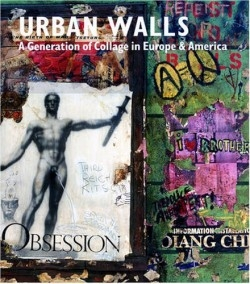Urban Walls
A Generation of Collage in Europe and America
Public Art: Burhan Dogançay’s father, a painter, sent him to Paris from Istanbul to study economics. He had to promise not to study art or play soccer. Dogançay kept his promise, more or less, until he graduated and visited New York. There, on the Upper East Side, he saw a wall that would change his life. “It struck me as a perfect composition,” he said. “In spite of its decaying and aging appearance, it looked like a beautiful painting.”
Urban Walls: A Generation of Collage in Europe & America (Hudson Hills Press, 978-1-55595-288-4) displays Dogançay’s 40-plus-year chronicle and interpretation of public walls, windows, doors, what he calls a “reconstruction of the arbitrary” and a “mirror of the neighborhood.” Accompanying and complementing the 75 beautiful and disturbing plates is an essay by art historian Brandon Taylor. Taylor documents the beginning of collage by Braque and Picasso, and its transformation after the massive urban destruction of World War II. Walls, buildings, lives, expectations were fragmented and jumbled—collage, and its opposite, decollage, or “the tearing of parts asunder,” were artists’ attempts to make unspeakable public spaces articulate. Taylor describes how the Beats, the size of American studios, and the GI Bill all contributed to the self-discovery of Rauschenberg, Villeglé, and Hains, among others.
Disclosure: This article is not an endorsement, but a review. The publisher of this book provided free copies of the book to have their book reviewed by a professional reviewer. No fee was paid by the publisher for this review. Foreword Reviews only recommends books that we love. Foreword Magazine, Inc. is disclosing this in accordance with the Federal Trade Commission’s 16 CFR, Part 255.

